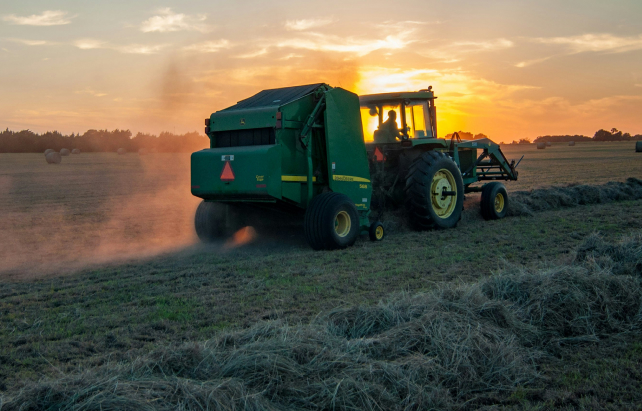The current farm economy has plenty of unknowns, leaving many farmers unsure how to approach their capital plans this year.
We asked three ag bankers for their advice on building a strong capital plan. Here are 5 key takeaways:
1. Know your numbers so you can identify problems early
Close out the year with an accurate assessment of your 2024 cost of production, sold inventory and pricing. Update your balance sheet based on the current value of your crop. Account for your prepaid inputs and don’t forget family living expenses. Be transparent about where you ended the year so you can make realistic decisions.
“Bankers like to help farmers that like to help themselves. And so if you’re coming in, maybe your 2024 didn’t turn out the way you wanted, bring your ideas and suggestions on what you can do – whether it’s to improve your liquidity or maybe revise your marketing plan. Because we want to help you, so help us help you.” – Rebecca King, SVP & Group Head, Agriculture, Old National Bank
2. Define where you want to be in 1, 3 and 5 years
Sharing your 1, 3 and 5-year plans, and any foreseen capital expenditures such as a landlord buy-out, will help you work together to make the right financial decisions.
“Paint that full picture, because we can help you make financial decisions on whether or not to finance a purchase based on what’s coming down the pipeline.” – Grant Wiese, FARM640 and Ag Lender, Farm Credit Services of America
3. Protect working capital so you’re positioned to play offense and defense
Now’s the time to preserve working capital. Balance how much cash you put on purchases and how much you finance. Protect liquidity so you’re ready for any unexpected repairs or expenses, or to capitalize on land opportunities. If you can, consider leveraging your resources to generate new revenue.
“Make sure that you and your banker have confidence in your position before you go and make any big purchases or decisions for this upcoming year.” – Grant Wiese, FARM640
4. Access additional capital through an equity partner so you’re prepared
Equity financing allows you to tap more of your equity than typically what your bank would allow, while protecting your cash position. Many farmers are using it today to build a buffer for those unexpected expenses. It can also position you to buy assets in a downturn without overextending yourself, creating a springboard for more growth.
“Ag is a highly capital intensive business with low margins. Every other capital intensive industry uses outside financing that is both debt and equity. Farmers need to have that option, and equity capital is an option that comes alongside farmers.” – Ben Gordon, Fractal
5. Pressure test different scenarios with your banker
An experienced banker can connect you to multiple sources of capital and finance opportunities. Instead of a banker who says “yes” all the time, partner with one who will pressure test your capital plans against your growth goals.
“Determine what you want from your banking partner – whether it’s favorable rates, credit structure, or value. If you’re looking for value and not getting that, then maybe it’s time to find another lender.” – Jeremy Doetch, The Farming Banker and SVP, Ag & Commercial Team Lead, German American State Bank
Plan ahead and map out where you want your farm to be. If you can’t do the math on how to get there, you need to sit down and talk with your lender, an advisor or investor.
Ben Gordon concluded, “How do you ensure capital is there when that once in a lifetime farm comes up? Being prepared, engaging with your future is the difference between a farm that will thrive and one that has to gut it out.”
Note this is not investment advice. The information contained should be used for informational purposes.
LEARN HOW TO UNLOCK YOUR EQUITY
"*" indicates required fields
We hold your data in high regard. By submitting this form, you are consenting to the use of this information in compliance with our Privacy Policy.


